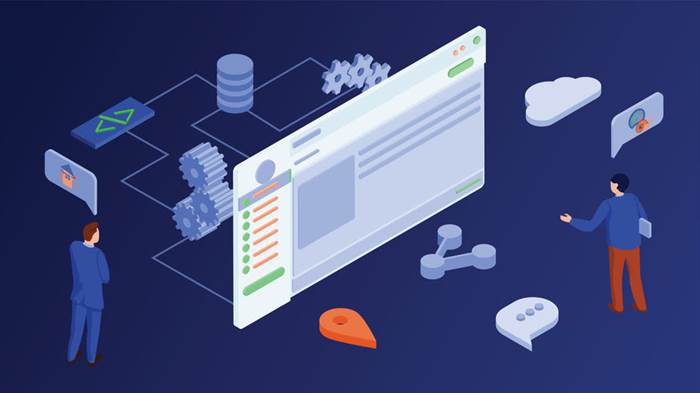The Open Group Service Integration Maturity Model Osimm Version 2 The Model
However, at this point, the earlier ad-hoc and native integrations begin becoming a problem in themselves. The IT techniques in the silos have been analyzed and broken down into component elements, with a framework by which they are often developed into new configurations and methods. Although components work together by way of outlined interfaces, they don’t appear to be loosely coupled, which limits agility and interoperability between different segments of the group (or even different organizations within the business “eco-system”). Business and infrastructure parts are discrete and re-usable by way of code and EAI re-use techniques. At the guts of OSIMM are the seven levels of enterprise enterprise and IT service-integration maturity.
Prior to this degree, the enterprise course of meeting, though agile, is carried out at design time by builders (under the steerage of enterprise evaluation and product managers) utilizing suitable tooling. Now this meeting could additionally be carried out at runtime, either assisted by the business analysts by way of appropriate tooling, or by the system itself. This requires the flexibility to access a repository of services and to question this repository via the characteristics of the required services. In its easiest form, these traits might have been defined upfront, proscribing the system to deciding on and locating particular instances of services. For example, think about the cell Information x Silo, with the label “Application-Specific Data Solution”.
Soa Work Group
It is essential to choose a mannequin that most precisely fits your integration wants, goals, and context. Therefore, so as to increase their organization’s integration maturity, application leaders should concentrate on the business goals and attempt to maximize the worth they receive from each funding in integration capabilities. Report for leaders to identify existing gaps in integration capabilities, develop integration strategy, and embrace best practices for self-service integration. A maturity mannequin framework is important for enterprises seeking to deploy API/integrations throughout business capabilities providing a roadmap for achievement. With differing views and definitions on application integration, a framework like this becomes all the more important.
Digibee customers all the time have a clear-cut objective in mind prior to implementing the Digibee iPaaS. Revisit the list in the previous segment and choose an initiative that is significant to your organization to assist measure the ROI of enterprise integration. This exercise will provide you with quantifiable efficiencies you must use to easily offset the price range and assets the project would require.

The extensibility of the OSIMM framework is meant to provide a way to reinforce the bottom OSIMM model to incorporate such ideas. The integration maturity mannequin is a framework that can assist organizations assess their present integration capabilities and establish areas for improvement. The model defines a set of maturity levels, the place each stage represents a different integration maturity stage. The greater the maturity level, the more environment friendly the organization’s integration capabilities. The Open Group SOA Integration Maturity Model (OSIMM) supplies consultants and IT practitioners with a way to assess an organization’s Service Oriented Architecture (SOA) maturity level.
Stage 5: Composite Companies
The Business dimension is targeted on the enterprise structure; i.e., the organization’s present enterprise practices and policies; how business processes are designed, structured, carried out, and executed. The Business dimension also addresses how the value of IT capabilities is allotted throughout the enterprise, and the way properly the IT capabilities support the flexibleness of the enterprise https://www.globalcloudteam.com/, agility, and SLAs. And thus consists of the necessary value proposition for moving from one maturity stage to the next level maturity level. A discussion of these worth propositions are in Benefits of Moving to Higher Maturity Levels. The OSIMM base model provides maturity indicator weighting primarily based on a 10-point scale by maturity stage.

However, at this stage the composition of providers and circulate of control within a composite utility are still outlined by developers writing bespoke code, somewhat than by a declarative move language. Each maturity stage represents a major improve within the level of maturity needed continuous delivery maturity model to comprehend service orientation. While many SOA methods and practices are used to comprehend service orientation, the OSIMM is deliberately inclusive of recent and evolving strategies for implementing services corresponding to cloud computing.
Each of the seven levels displays a possible abstract state of a company in terms of its maturity in the integration of its companies (business and/or IT) and SOA resolution. Each maturity degree builds on the inspiration of its predecessors and could have a cumulative set of maturity attributes. The Gartner Integration Maturity Model is a useful tool for organizations trying to improve their integration capabilities. By following this model, organizations can obtain greater efficiency, agility, and innovation in their business processes, in the end leading to improved business outcomes.
Assessment questions are correlated to maturity attributes for each maturity indicator by dimension. This helps the evaluation facilitator consider which evaluation questions are meant to elicit information that can be used to correlate specific maturity attributes to a particular maturity indicator, thereby figuring out the service maturity stage. Assessment Question Mapping for Level 1 Business Dimension Maturity shows that Business dimension questions 2 and three elicit the maturity attributes that might indicate a Silo (Level 1) Business dimension (i.e., business processes usually are not formally outlined and documented). The 2022 Digibee Enterprise Integration Report reveals that 98% of organizations repeatedly rebuild integrations for key enterprise purposes every year. The idea of a Maturity Model is a broadly known framework that articulates “the ability of a corporation for continuous enchancment in a selected discipline”.
What Are The Advantages Of Using An Integration Structure Maturity Model?
The first three layers of the OSIMM maturity mannequin – Silo, Integrated, and Componentized – are referred to as the Service Foundation Levels. Service integration and orientation is much easier to achieve if enterprise and infrastructure capabilities are developed as discrete elements which are componentized, location-independent, and loosely-coupled from the underlying runtime surroundings. The Service Foundation Levels may be seen as recommended stipulations for providers enabling a legacy setting (or even aggregating existing services). While it is possible to offer companies over poorly structured legacy environments, it may compromise the success of the SOA resolution. Green-field SOA functions may be an exception and never require the same steps to attain service orientation as re-using legacy enterprise functions. Services developed using web providers and different service enabling applied sciences should also meet the maturity traits outlined by the Service Foundation Levels.

To use an integration architecture maturity model, you have to select the mixing domains and dimensions that you wish to assess, similar to information, applications, processes, services, governance, quality, safety, efficiency, scalability, and so forth. Then apply the criteria and indicators of the chosen model to every area and dimension and assign a score or a level. You can collect data and evidence in your assessment via surveys, interviews, audits, metrics or different strategies.
Security
Discover the place your enterprise organization stands on their digital transformation based mostly on the Gartner Enterprise Integration Maturity Model. Our group of experts helps clients by understanding their problem statements and evaluating their integration necessities by learning each minute side. We additionally present a proof of idea for a particular platform to assist customers arrive at an knowledgeable choice. Our solution accelerator provides organizations a head begin in deciding on the right platform. Coforge’s vision is to strengthen the digital backbone of group that helps them modernize, monetize, and handle the whole suite of their present capabilities and digital property.
- Capability maturity models (CMMs) are used to judge an organization’s capability to perform a specific course of or exercise.
- The Service Integration Maturity Model (SIMM) is a standardized mannequin for organizations to guide their transformation to a service primarily based business model.
- Appraisals of organizations utilizing a CMMI model[12] must conform to the requirements defined in the Appraisal Requirements for CMMI (ARC) document.
- This severely limits the flexibility of the group to implement enterprise processes that require co-operation between the completely different components, and the IT methods can’t be built-in without important handbook intervention, similar to re-keying and re-interpretation of information.
Technologies that power Enterprise Integration & Automation have evolved quickly in the final 3-5 years. Integration & Automation has long been the middle of any dialogue on technique for IT and Business leaders, and more so now in the wake of COVID-19. An early-stage company’s first order of enterprise is to search out product-market fit and by definition haven’t settled on long-term enterprise processes yet.
The maturity indicators are assessed in opposition to a set of questions that elicit an organization’s present business and infrastructure-related service and SOA-related practices. The OSIMM base mannequin includes a set of assessment questions and maturity indicators that can be utilized as provided or prolonged to determine an organizations service integration maturity. The method that companies may be invoked is predicated upon open standards and is impartial of the underling utility know-how. Services run on an IT infrastructure that’s supported by the suitable protocols, safety mechanisms, information transformation, and repair management capabilities.
This helps companies and teams perceive the challenges they face and where they could be headed primarily based on the place they sit within the maturity model. The Open Group Service Integration Maturity Model (OSIMM) specifies how to measure the service integration ranges of a corporation and its IT systems and business functions. In addition, it provides steerage on how to obtain sure ranges of service maturity needed to comprehend associated business benefits. In abstract, IMM can be used by companies of any dimension to enhance their integration processes. By understanding their present maturity stage and identifying areas for improvement, companies could make the mandatory changes to improve their integration capabilities and obtain enterprise goals. An integration structure maturity model is a tool that defines the levels of integration maturity, from ad hoc and siloed to agile and holistic.
This method advantages companies derive cost discount, income development, and efficiency gains. Depending on the kind of appraisal, the group may be awarded a maturity stage ranking (1–5) or a capability stage achievement profile. Depending on the areas of curiosity (acquisition, companies, development) used, the method areas it incorporates will range.[11] Process areas are the areas that will be covered by the organization’s processes. The table below lists the seventeen CMMI core course of areas which would possibly be present for all CMMI areas of interest in version 1.three. As we enter the second decade of SaaS purposes, corporations are actively adopting dozens, even lots of of best-of-breed enterprise applications across multiple departments — and the tempo is accelerating. Instead, companies right now are far more targeted on maximizing the return on the increasingly vital funding presented by cloud applications as they mature.

